Occupational environment monitoring at the fur leather products factory
99,000 ₫
Note: The above price is calculated for one sample, the price may vary depending on the area of the environment that needs monitoring and the movement of the market. For more accurate price support, please refer to the quotation table or contact directly with our consulting staff.
Environmental monitoring of a fur leather product factory is a session of collecting, analyzing, and evaluating factors in the workplace that may harm workers health.
Table of Contents
Toggle1. Overview of Fur Leather Product Manufacturing Factories
a. What is a fur leather product manufacturing factory?
A manufacturing factory for fur leather products is a facility where products made from the hides and furs of animals such as deer, sheep, goats, wild boars, crocodiles, and others are processed and manufactured. In this factory, hides and furs are sourced from reputable suppliers and then treated and processed to produce a wide range of leather and fur products such as jackets, bags, shoes, gloves, hats, and other fashion items.

b. Production stages in a fur leather product manufacturing factory
The production process of fur leather products involves several stages, including:
- Material collection: Hides and furs are collected from reliable sources, either domestically or imported from other countries.
- Cleaning and pre-treatment: Hides and furs are cleaned to remove dust, grease, and other impurities. They may then undergo pre-treatment using chemical processes to eliminate odors and decay agents.
- Bleaching and recycling: Bleaching and recycling processes are applied to soften the leather and remove hardness. This may include chemical treatments or microbial recycling methods.
- Cutting and processing: Hides and furs are cut into pieces or shapes necessary to create products such as jackets, bags, or shoes. The leather pieces may also be further processed with painting, punching, stamping, or heat pressing to create designs or patterns on the surface.
- Stitching and finishing: Leather pieces are sewn together to form the final product. This stage includes stitching, assembly, use of zippers, buttons, fasteners, and other details to complete the product.

c. Types of machinery used in fur leather product manufacturing factories
A variety of machinery and equipment are used in fur leather product factories for production and processing. Some commonly used machinery in this industry includes:
- Leather cutting machines: Automatic cutting machines or laser cutters are used to cut leather into required pieces or shapes.
- Leather tanning machines: Used to remove hardening agents and impurities from leather.
- Heat pressing machines: Used for stamping, attaching labels, or pressing decorative details onto the leather surface.
- Industrial sewing machines: Used to sew leather pieces into final products. Types include single-needle industrial machines, multi-needle industrial machines, and automated sewing machines.
- Button stamping machines: Used to attach buttons on leather products such as jackets or bags.
- Punching machines: Create holes in leather pieces to facilitate stitching and assembly.
- Polishing machines: Used to smooth and shine the leather surface.
- Thread cutting machines: Automatic machines for precise and quick cutting of sewing threads.
- Embroidery machines: Used to embroider patterns or logos onto leather products.
- Leather printing machines: Digital or heat-transfer printing machines used to print patterns, images, or logos directly onto leather surfaces.

d. Occupational diseases that may occur for workers in fur leather product factories
Workers in fur leather product manufacturing factories may experience occupational diseases related to exposure to hides, furs, and chemicals during production. Common occupational diseases in this industry include:
- Skin allergies: Prolonged exposure to animal hides and furs can cause skin allergies, itching, dermatitis, blistering, and similar symptoms.
- Respiratory diseases: Dust from hides and animal furs can irritate the respiratory tract, leading to asthma, bronchitis, and pneumonia.
- Spinal and joint disorders: Tasks involving lifting, pulling, transporting, and assembling fur leather products may stress the spine, causing back pain, spinal degeneration, and joint problems.
- Eye disorders: Exposure to chemicals and dust can cause eye irritation and infections, resulting in redness, itching, tearing, and other issues.
- Nervous system disorders: Contact with certain chemicals during production can harm the nervous system, causing dizziness, headaches, insomnia, and other neurological problems.
- Digestive system disorders: Exposure to chemicals and dust can irritate and inflame the digestive tract, causing abdominal pain, diarrhea, nausea, and other issues.
To protect workers’ health, safety measures, protective equipment, and compliance with safe working procedures are required.

e. Popular fur leather products on the market
There are many types of fur leather products available on the market, including:
- Jackets and vests: Made from sheep, pig, goat, cow, or camel leather. These garments offer a luxurious appearance and warmth.
- Bags and briefcases: Used to make bags, briefcases, and other types of leather carriers. Fur leather provide elegance and uniqueness to these products.
- Shoes and sandals: fur leather are used to create footwear, offering style and sophistication.
- Gloves: Popular in winter, providing warmth and a luxurious look.
- Decorative rugs: Fur is used to make decorative rugs, adding accents and elegance to living spaces.
- Fashion accessories: Items such as collars, hats, scarves, belts, wallets, and small jewelry can be made from fur leather.
- Interior decoration items: Fur leather are used for home décor products such as cushions, blankets, curtains, and upholstered chairs.
2. Overview of Occupational Environment Monitoring Services
a. What is occupational environment monitoring in fur leather product factories?
Occupational environment monitoring (or workplace environment measurement) in fur leather product factories involves collecting, evaluating, and analyzing workplace environmental factors to implement timely measures that reduce environmental hazards to workers’ health and prevent occupational diseases. Occupational environment monitoring is mandatory for fur leather product manufacturing factories.
This monitoring plays a crucial role in protecting, maintaining, and enhancing workers’ health, as labor is the main resource of a company and directly generates profit. Workers frequently exposed to risk factors beyond permissible levels are at risk of health problems and occupational diseases.
REGISTER FOR OCCUPATIONAL ENVIRONMENT MONITORING SERVICE
b. Nam Viet’s occupational environment monitoring program
Nam Viet’s occupational environment monitoring program is developed by engineers specializing in occupational safety and environmental protection. Aiming to ensure worker health and safety, the program uses modern measurement methods to monitor air quality, water quality, microclimate, physical factors, dust, and other workplace conditions. This program is crucial for ensuring a safe working environment and protecting employees’ health.
Additionally, the program plays an important role in researching and developing new solutions to improve workplace environmental quality. With a dedicated and professional team of monitoring experts, Nam Viet’s proprietary program represents a breakthrough in occupational safety management and environmental protection in Vietnam.

c. Standardization in workplace measurement procedures
Standardization in Nam Viet’s workplace measurement procedures is essential for ensuring the accuracy and reliability of results. The program applies recognized standards and procedures from Ho Chi Minh City Department of Health, ensuring collected data is reliable for workplace evaluation and informed decision-making to improve working conditions and protect workers’ health.
These standardized procedures also guarantee that measurements are conducted by highly skilled monitoring professionals with years of experience, enabling managers and specialists to trust Nam Viet’s results and make accurate, valuable decisions for occupational health and environmental protection.
By applying standardization in workplace measurements, Nam Viet demonstrates its commitment to ensuring a safe working environment and protecting workers’ health, while contributing to the development and enhancement of occupational safety management and environmental protection in Vietnam.
d. Reporting monitoring results for fur leather product factories
Occupational environment monitoring results are prepared according to Form No. 04, Appendix III issued with Decree 44/2016/ND-CP and is prepared in two copies: one copy is sent to the enterprise that signed the monitoring contract, and one copy is kept by the monitoring organization.
The retention period for occupational environment monitoring results is indefinite, according to legal regulations.

e. Frequency of occupational environment monitoring as required by law
According to Clause 2, Article 18 of the Occupational Safety and Health Law 84/2015/QH13, employers must organize occupational environment monitoring to assess harmful factors at least once per year.
f. Deadline for submitting occupational environment monitoring reports as required by law
The deadline for report submission is before December 31 each year. Enterprises in production facilities are required to submit occupational environment monitoring results to the local Department of Health where their headquarters and workers are located.
When there are changes in technology, production processes, or facility renovations/upgrades that may introduce new hazardous factors affecting workers’ health, enterprises must update occupational hygiene records regarding relevant hazardous factors to be monitored.
g. Penalties for violations of occupational environment monitoring regulations for employers
According to Article 27 of Decree No. 12/2022/ND-CP dated January 17, 2022, regulating administrative penalties in labor, social insurance, and Vietnamese workers going abroad under contract:
- Clause 2: Fines ranging from VND 2,000,000 to 5,000,000 for employers who fail to publicly inform employees at the monitored workplace and relevant locations immediately after receiving monitoring results and evaluation of hazardous factors.
- Clause 3: Fines ranging from VND 20,000,000 to 40,000,000 for employers who fail to conduct occupational environment monitoring to control risks to employees’ health as required by law.
- Clause 4: Fines ranging from VND 40,000,000 to 60,000,000 for employers who collude with monitoring organizations to falsify monitoring activities, without reaching criminal liability.
3. Harmful environmental factors for workers in fur leather product manufacturing factories
Workers in fur leather product manufacturing factories may be exposed to harmful environmental factors. Here are some potential environmental factors that can affect workers’ health:
- Dust and particles: The processing of fur leather can generate dust and small particles in the air. Inhalation of these particles can cause respiratory irritation, pneumonia, and other respiratory problems.
- Chemicals: Fur leather treatment processes often use chemicals such as detergents, dyes, and preservatives. Long-term exposure to these chemicals can cause skin irritation, allergies, and respiratory issues.
- Organic vapors: Processes such as dyeing, softening, and treating fur leather can produce organic vapors in the work environment. These vapors may irritate the eyes, nose, throat, and respiratory system.
- Noise: Machinery and equipment in fur leather product factories can generate high noise levels. Continuous exposure to noise can harm hearing, cause stress, and lead to sleep disturbances for workers.
- Temperature and humidity: Some production processes in the fur leather industry can create high temperature and humidity levels. Uncomfortable temperature and humidity can cause fatigue, discomfort, and affect workers’ health.
REGISTER FOR OCCUPATIONAL ENVIRONMENT MONITORING SERVICE
4. Measures to improve the working environment in fur leather product factories
To improve the working environment in fur leather product factories and protect workers’ health, the following measures can be implemented:
- Ensure ventilation and exhaust fans: Provide an effective ventilation system and exhaust fans to remove dust and organic vapors from the workplace air.
- Use personal protective equipment: Ensure workers are fully equipped with personal protective equipment such as masks, safety goggles, gloves, and reflective clothing to prevent direct exposure to harmful substances.
- Chemical management: Use safe chemicals and limit the use of irritant or toxic substances. Ensure proper storage and handling to prevent leaks and environmental contamination.
- Periodic machinery inspection and maintenance: Regularly inspect and maintain machinery and equipment to ensure efficient operation and reduce unnecessary noise and vibration.
- Employee training and education: Provide training on occupational safety and work procedures, including proper use of protective equipment, safe work practices, and emergency measures. Increase workers’ awareness and knowledge of hazards and prevention methods.
- Adjust the working environment: Maintain suitable temperature and humidity levels to provide a comfortable working environment for employees.
- Risk management: Identify, assess, and manage potential risks by implementing preventive and control measures to ensure a safe and healthy workplace.
- Periodic health checks: Conduct regular health checks for workers to detect occupational-related health issues early and implement preventive measures.
- Promote safety and health awareness: Create a safe working environment and encourage employees to follow safety regulations, report hazards, and provide feedback to improve the workplace.
- Regularly conduct occupational environment monitoring in factories, collecting and analyzing harmful factors to adjust and reduce hazards and prevent occupational diseases for workers.
5. Benefits of periodic monitoring in fur leather product factories
An Toan Nam Viet provides enterprises with excellent benefits when using occupational environment monitoring services in accordance with Decree 44/2016/NĐ – CP on managing and controlling harmful factors in the working environment affecting employees.
- Enterprises can proactively control harmful factors in workshops or factories.
- Receive recommendations on measures to reduce harmful factors and improve workplace quality.
- Indirectly protect human resources, the key factor in enterprise development.
- Reduce the impact of occupational diseases on health, thereby minimizing future medical costs.
- Improved worker health enhances product quality and ensures stable production output.
- Ensure compliance with labor safety laws and avoid legal risks.
- Enhance credibility and professionalism in all aspects, elevating the enterprise’s brand.
Nam Viet’s environmental monitoring service is a solution to reduce occupational disease risks, contributing to a healthy and high-quality working environment.

6. National occupational environment monitoring center
Nam Viet Occupational Environment Monitoring Center is a professional unit specializing in monitoring and measuring occupational environment quality across all provinces in Vietnam. With an experienced team of monitoring specialists, the center uses modern measurement equipment, ensuring accuracy and reliability.
In addition to monitoring services, the center assists clients in planning, managing, and tracking occupational environment issues. With the motto “customers are central,” the center prioritizes customer satisfaction, meets all client needs, and is committed to providing the best solutions for enterprises.
REGISTER FOR OCCUPATIONAL ENVIRONMENT MONITORING SERVICE
With investments in technology, equipment, and human resources, Nam Viet’s monitoring center has become one of the most reputable units in occupational environment monitoring in Ho Chi Minh City, with the following goals:
- We always value our brand reputation and the quality of our services.
- We provide clients with the best and most suitable solutions possible.
- Along with a team of experienced Masters and Engineers, we aim to protect the environment and benefit enterprises.
- Working with Nam Viet Monitoring Team, companies will receive professional service from experts and enjoy the best cost advantages.
The occupational environment monitoring process at Nam Viet includes the following basic steps:
- Before monitoring, our company ensures all machinery and equipment are calibrated and adjusted according to legal regulations.
- Strictly follow the occupational environment monitoring procedures as committed to the Department of Health.
- Accurately report monitoring results to employers.
- If monitoring results indicate unsafe conditions for workers, Nam Viet will support remedial measures, and the workplace shall implement:
- Implement measures to improve working conditions to minimize harmful impacts and prevent occupational diseases.
- Organize health checks to detect occupational and work-related illnesses early for workers in unsafe environments.
- Provide allowances in kind for workers according to labor law regulations.

7. Occupational environment monitoring service quotation
To help enterprises perform occupational environment monitoring professionally and effectively, Nam Viet provides customers with a detailed quotation for occupational environment monitoring services with quality and reasonable cost.
- Our quotation provides detailed pricing information for the monitoring services we offer, including costs related to transportation, measurement, analysis, and reporting. Customers can fully rely on the accuracy and reliability of the monitoring reports we provide.
- We are committed to offering the most competitive and reasonable prices on the market and are ready to provide prompt and professional consultation for any questions regarding monitoring services.
- With Nam Viet’s monitoring quotation, customers can easily select service packages that suit their needs. We are committed to delivering the highest satisfaction with professional service quality.
No comments yet

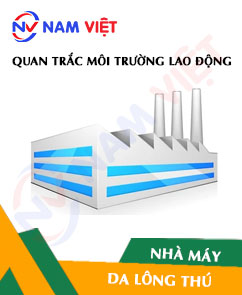
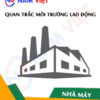
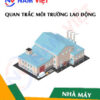


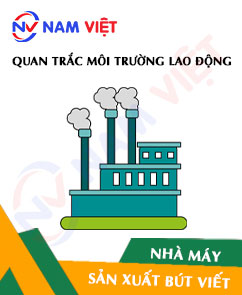
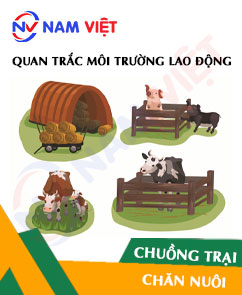
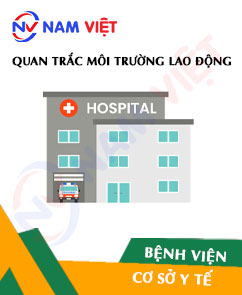

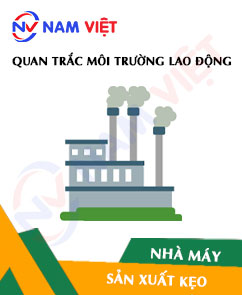
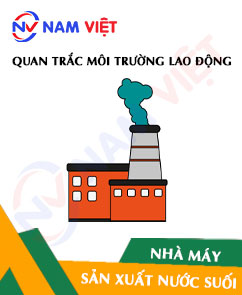
Review Occupational environment monitoring at the fur leather products factory
There are no reviews yet.